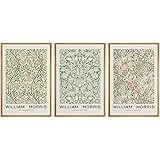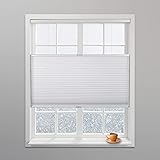The rapidly evolving world of mobile technology often comes with an equally rapid turnover of accessories, many of which can be surprisingly expensive. Furthermore, specific needs are not always met by commercially available products, leading to a constant search for more personalized or economical solutions. Fortunately, engaging in DIY phone gadgets offers a compelling alternative, allowing enthusiasts to craft custom accessories that perfectly suit individual requirements while fostering a deeper understanding of electronics.
The video above provides a concise overview of three incredible phone gadgets that can be assembled at home. This supplementary article aims to expand upon these concepts, offering greater detail, practical considerations, and additional context for each project. Through these DIY electronics projects, innovative solutions for common mobile challenges can be created, proving that advanced functionality does not always require a premium price tag.
Crafting a Custom Capacitive Stylus for Enhanced Precision
One of the simplest yet most effective DIY phone gadgets involves creating a custom stylus. A stylus provides a level of precision and comfort often superior to finger input, particularly for intricate tasks like drawing, note-taking, or navigating small interface elements. Moreover, during colder months, a stylus becomes invaluable, as gloves frequently prevent direct touchscreen interaction.
Understanding Stylus Functionality
Modern smartphone screens operate on capacitive technology, which detects the electrical capacitance of a human finger. Consequently, a successful DIY stylus must mimic this electrical property. Conductive materials are therefore paramount in its construction; these materials effectively transfer the body’s electrical charge to the screen, allowing for seamless interaction. Materials such as conductive foam, aluminum foil, or even a specialized conductive fabric are commonly employed for this purpose.
Materials and Construction Principles
Typically, the core components for a DIY stylus include a suitable conductive tip and a comfortable pen-like body. A disassembled pen barrel or a simple wooden dowel can be utilized as the housing. For the tip, a small piece of conductive foam, often found in electronics packaging, can be shaped and attached. Alternatively, a cotton swab dipped in conductive ink or wrapped in fine aluminum foil is often effective, although care must be taken to ensure the foil maintains contact with the user’s hand to facilitate charge transfer. The conductive material must make consistent contact with the screen while also being soft enough to prevent scratches, which is a critical design consideration.
Applications and Refinements
Beyond basic navigation, a homemade stylus significantly enhances digital artistry and detailed photo editing on mobile devices. For those needing maximum precision, the tip can be further refined using specialized conductive glues or even by repurposing the conductive tip from an old commercial stylus. Proper construction ensures durability, allowing these custom phone accessories to withstand regular use and become an indispensable tool in one’s mobile toolkit.
Building an On-The-Go (OTG) USB Adapter: Expand Your Phone’s Capabilities
The second compelling project highlighted in the video involves constructing a female USB to micro USB adapter. This clever custom phone gadget unlocks the powerful USB On-The-Go (OTG) functionality present in many Android devices, enabling direct connection of various USB peripherals to a smartphone or tablet. The ability to connect external devices dramatically expands the utility of a mobile device, effectively transforming it into a more versatile computing platform.
Exploring USB OTG Functionality
USB OTG allows a mobile device to act as a ‘USB host,’ meaning it can power and communicate with standard USB accessories. Without an OTG adapter, a smartphone typically functions as a ‘USB device,’ only capable of connecting to a computer. Therefore, building this adapter is a fundamental step in leveraging the full potential of compatible Android phones. A wide array of peripherals can be connected, from storage solutions to input devices.
Key Components and Soldering Essentials
The construction of this adapter primarily requires a female USB Type-A port and a micro USB (Android port) plug. These components are readily available from electronic parts suppliers or can be salvaged from old cables and devices. Crucially, precise soldering is involved in connecting the data and power lines between the two connectors. The standard pinout for USB dictates that specific pins on the micro USB connector must be wired to their corresponding pins on the female USB port, with an important exception: pin 4 (ID pin) on the micro USB side must be grounded to signal to the phone that it should operate in host mode. This small detail is essential for the adapter’s functionality.
When soldering, suitable ventilation and personal protective equipment are strongly recommended. A steady hand and a fine-tipped soldering iron are beneficial for clean, strong connections. After soldering, it is advisable to test the connections with a multimeter to ensure continuity and prevent short circuits. Covering the exposed soldered joints with heat shrink tubing or electrical tape provides insulation and structural integrity, protecting the delicate internal wiring.
Practical Applications for Your DIY Adapter
Once completed, this DIY phone gadget opens a world of possibilities. Flash drives can be connected for easy file transfer and expansion of storage capacity. External keyboards and mice can be attached, transforming a smartphone into a makeshift mini-computer for typing documents or navigating complex interfaces more efficiently. Additionally, game controllers, USB card readers, and even some webcams are often compatible, making this one of the most versatile custom phone accessories one can create.
Integrating a Bluetooth Module: Wireless Audio and Control
The third concept introduced in the video involves a Bluetooth module, a component that forms the backbone of countless wireless communication projects. While the video briefly mentions it, understanding how to integrate and utilize a Bluetooth module allows for the creation of truly innovative DIY phone gadgets that leverage wireless connectivity. These modules provide a seamless way to add Bluetooth capabilities to existing devices or to build new ones from scratch, fundamentally changing how various devices interact with a smartphone.
Exploring Bluetooth Module Types and Functions
Bluetooth modules come in various forms, each designed for specific applications. For wireless audio projects, modules like the common Bluetooth audio receiver boards are preferred; these typically feature built-in amplifiers and outputs for connecting speakers. For data communication and control applications, modules such as the HC-05 or HC-06 are widely used, enabling wireless serial communication between a phone and a microcontroller, for instance. Selecting the appropriate module depends entirely on the intended functionality of the DIY project. Each type of module is designed with specific power requirements and communication protocols in mind.
Powering and Connecting Your Module
A typical Bluetooth module requires a stable power supply, often 3.3V or 5V DC, which can be provided by a small power bank, a USB power source, or batteries. The connections involve linking the module’s power input (VCC and GND) to the power source. For audio modules, audio output lines are connected to speakers or headphones, possibly through an amplifier circuit. Data modules, conversely, will have TX (transmit) and RX (receive) pins that connect to a microcontroller or other serial device. Proper voltage regulation is critical to prevent damage to the delicate electronics within the module, ensuring its longevity and reliable performance.
Building Projects with Bluetooth
The potential for DIY phone gadgets utilizing Bluetooth modules is vast. One popular project involves converting old wired speakers or headphones into wireless Bluetooth-enabled devices, simply by integrating an audio receiver module. This repurposing extends the life of existing equipment and adds modern convenience. Another application could be building a custom remote control for smart home devices, where a phone communicates with a microcontroller via a Bluetooth module to toggle lights or activate appliances. Furthermore, custom sensor projects, where data is transmitted wirelessly from a sensor array to a smartphone for logging or display, are also readily achievable. The versatility of Bluetooth makes it an indispensable component for sophisticated DIY electronics projects.











